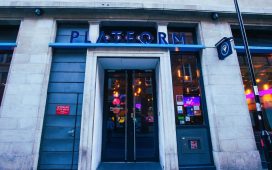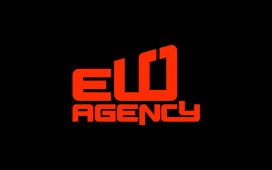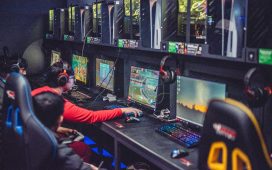In February, ESL kicked off the next phase in its 19-year career by unveiling a bold brand refresh, which injected flashes of yellow and green into a punchier aesthetic paired with a tweaked logo and original typeface. As chief marketing officer Rodrigo Samwell told The Esports Observer after the announcement, “We wanted to be bold and show our presence.”
That refreshed identity has reverberated throughout the company, and will show itself gradually throughout ESL’s myriad brands in the coming months. It will also come through via merchandising, as the company reasserts the way that it appeals to fans via apparel and other physical offerings. David Hiltscher, ESL’s VP of its shop, merchandising, and licensing, sees wide-ranging benefits to the refresh. His team had input during each stage of the project, which ESL produced alongside agency Superunion.
“If you look at our old merch portfolio, you can see how boring it is. “
“It was a major undertaking that was supposed to fix a lot of different things,” he said. “Strengthening the ESL brand is obviously beneficial for brand licensing. The stronger your brand, the higher royalties and better deals you can command. Merchandise was definitely part of it. Every visualization went through many different iterations. There was always a check: How does the proposed visual identity look for on-screen, like streaming graphics? How does it look graphically on the web? How does it look for photos, and how does it look for merchandise?”
Hiltscher’s input was necessary when it came to finalizing the new colors, as ESL needed something that worked well across the board—including when printed on fabric. “There’s always a discrepancy between how a color looks on-screen and on fabric,” he said about the need to mix colors to yield the desired result. “It just doesn’t magically appear like it does on a monitor.”
Overall, however, his departments’ feedback was much more about nailing those little nuances than the broader scope of the refresh. “The direction on basically all of them was a huge step up from what we had before: very rigid brand guidelines, we couldn’t change the logo, the color was always very subdued and dark—it just limited us very much,” he said. “If you look at our old merch portfolio, you can see how boring it is. We were just very happy with the outcome of that, and there’s now a great toolset that we can play around with for years to come.”
Hiltscher has seen much of ESL’s previous evolution firsthand, as he joined the company in 2006 in an editorial capacity before heading up community management for several years. Noticing a void in the company’s merchandising efforts, Hiltscher gradually began focusing more and more of his time on it—first 10%, and then about half. Finally, he took over the role full-time in 2017. He saw the opportunity to leverage the value that ESL had created in its own brand over the years.
Credit: ESL
“As an industry, we’re always talking about average fan spend. That’s one of the key KPIs that everybody’s looking at. Esports is excelling in so many different areas over traditional sports, like engagement, how long people watch, and how many events they go to. But then you compare our average spend on the consumer level to traditional sports, and the situation looks very dire,” said Hiltscher. “It’s completely obvious that the one growth area in esports is ticketing, subscription services, and especially merchandise—it’s completely under-explored.”
“I love the opportunity of basically building something out of nothing,” he added, “where it’s absolutely 100% clear that there’s significant revenue potential.”
“For us, it was the first time that we were actually allowed to step out of the rigid brand guidelines.”
Related Article: ESL CMO on Brand Refresh, Enhancing Partnerships
When it comes to ESL’s own merchandise, Hiltscher oversaw last year’s collaboration with German street apparel brand SNIPES, which produced branded items such as t-shirts, bags, hoodies, and jerseys. “For us, it was the first time that we were actually allowed to step out of the rigid brand guidelines,” he said, “and were able to at least give someone else carte blanche in trying out things and experimenting; to have a fresher look to things.”
Hiltscher said that ESL was “very happy with most of what they did,” although he suggested that there was “a bit of a cultural issue” in how its designers approached the gaming audience. He pointed to the use of gaming terminology such as “1337,” “GG,” and “FTW,” and also noted a shirt that put a pixel graphic of a Street Fighter ![]()
Ultimately, however, he called it a positive learning experience on both sides of the collaboration, and that it has helped ESL with its upcoming merchandising initiatives. Further fashion brand crossovers are likely for ESL, given the potential to hit a much broader audience than the average esports merchandise might reach.
However, when it comes to merchandise from esports teams, Hiltscher suggested that many organizations aren’t providing all of the merchandising basics, like flags at stadium events or certain types of hats. He hopes that the arrival of fashion brands such as Champion will help drive improvement and evolution in the space.
Credit: ESL
“What we collectively need to figure out is the middle ground between classical merch items and more fashionable items, especially regarding hoodies, t-shirts—the standards of the fashion industry,” he said. “At the moment, what we have for most teams is very basic: black hoodie with a team logo on it. We haven’t come much further than that still, for whatever reason. I think that’s something that the fashion brands moving into the sphere will upend and change to the better. I’m definitely seeing that.”
Hiltscher cited ESL’s enormous reach as a benefit with team merchandising, as its myriad live events and online portals provide additional opportunities to move inventory—so it’s not as much of a risk to order a couple of thousand team jerseys, for example. There is a financial benefit to ESL selling team apparel and items, of course, but he sees it as more of a service to fans that can also help grow the entire industry.
“What we collectively need to figure out is the middle ground between classical merch items and more fashionable items.”
“If you go to these stadium events—and I always take time out to look at people when they stand in line on the first day—less than 10% come to the event wearing team merchandise,” he said. “A lot of people are still undecided: they’re interested in the game, but haven’t fully committed to a single team yet, which is natural. It’s not like in [traditional] sports, where you grow into being a fan because of the local presence of the team in whatever region you grew up in. For us, it’s important to be able to sell the team jerseys. We will always do that, as long as we don’t lose money on that, and everything else is a bit of a bonus.”
“Ultimately, the shared goal of building out esports and fan culture—that’s somewhere where I hope I can do my little bit for the overall good of esports,” Hiltscher added, “and get people more engaged with the team brands by committing with their wallets to a team.”
Editor’s note: This interview was conducted by Graham Ashton.
Want to hear more about esports merchandising trends and opportunities? Brian Mirakian will be a speaker at the HIVE esports business conference in Berlin on April 11, 2019. The first international esports business conference in Europe’s capital of esports. An unprecedented conference format featuring thought leaders of industries adjacent to esports sharing their insights. Click here to reserve your seat!

















